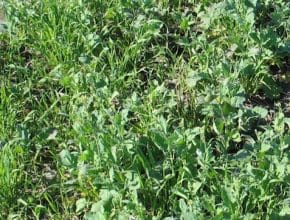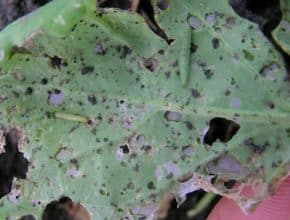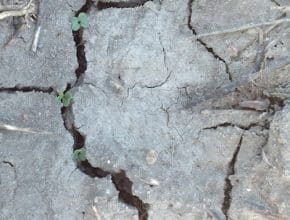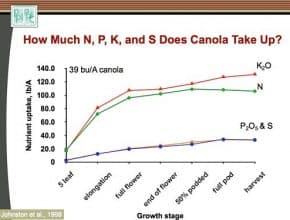Home / Canola Watch / Page 261
-
LL: Use high water volumes for Liberty and use the Group 1 tank mix. RR: Use the 180 ae rate of glyphosate if you plant to hit grassy weeds first and follow up later. CL: Consider Odyssey DLX for enhanced grassy weed control in Clearfield canola…
-
Diamondback moth and flea beetle damage can look similar in some cases. So can wireworm and cutworm underground feeding. Look for the damage and the insects before making a final spray decision…
-
If an insect or disease threat is present at economic thresholds and within the weed control window, applying herbicides with other pest control products can add to production efficiency and cost management. Before mixing, make sure all products are compatible. And if they are compatible, they may have strict rules for mixing order…
-
Keep it simple — compare only treated and untreated strips. Mark the strips and take them to yield. Do an economic analysis. Work with other agronomists and other growers and compare results…
-
No research has been conducted to show reliable ways to break up crusting and free the crop. If a few plants have emerged, it may be best to leave them be. One to 2 plants per square foot are better than none…
-
Herbicide performance is on a sliding scale depending on the weather. Cloudy days with highs of 10 C after a night near 0 C will tend to result in herbicide performance at the low end. Sunny days with highs of 15 C after a night of 3 C will provide improved control. Sunny days with highs of 20 to 25…
-
Weed control remains top of mind. Without good weed control, all other inputs — including fertilizer and top quality hybrids — cannot achieve the return on investment expected of them.……
-
Cool cloudy days after cool nights will result in lower herbicide efficacy than applications made in warm sunny days. Cloudy days don’t provide the photosynthetic activity required for many herbicides, including Group 10 glufosinate. And nights near freezing followed by days with highs that barely reach 10 C will not provide high metabolic activity required for best results from Group…
-
If good moisture has increased yield outlooks and nitrogen may not be sufficient, top dress applications should occur before the 5-leaf stage of the crop…





